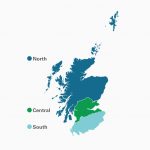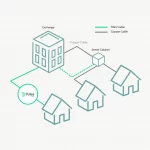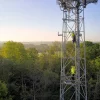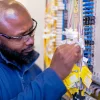INCA Summarises its Response to UK Gov’s Digital Inclusion Action Plan

The Independent Networks Co-operative Association (INCA), which represents many of the country’s alternative broadband operators, has today set out how it believes the UK should deliver on the government’s recently proposed Digital Inclusion Action Plan (DIAP) to help get more UK people using the internet and improve digital skills.
Just to recap. At the start of 2025 the UK government proposed to address the lack of digital inclusion in some areas via a series of “urgent actions” that it hopes will “begin fixing digital exclusion“. The DIAP includes various things, such as funding for local initiatives targeted to the most digitally-excluded groups (e.g. the elderly and low-income households) and partnering with inclusion charity Digital Poverty Alliance (DPA) to provide laptops to people who are digitally excluded.
The plan has also managed to extract pledges from key technology and telecoms companies (e.g. BT, CityFibre, Vodafone, Virgin Media, Openreach etc.) to help the Government achieve its mission. But some of those were just a continuation of what such operators have already been doing for the past few years.
Advertisement
The government is currently consulting on all of this and considering what more could be done, which is where today’s list of related proposals from INCA could come in handy.
INCA’s Proposals
- The independent network sector working closely with government to develop a plan-of-action to meet 100% coverage and encourage adoption of networks.
- Making tackling data and device poverty as the foundational priority for dealing with digital exclusion – without reliable, fast and affordable access to the internet and access to suitable devices, efforts to upskill individuals or build their confidence to engage with digital services will be fundamentally limited.
- Establish government partnerships with industry to improve digital inclusion and skills at pace. This should focus on areas such as access, participation, and a digital landscape where users feel safe in accessing digital services.
- Government playing a key role in facilitating interaction between industry and local authorities to support digital inclusion actions such as providing free broadband provision to lower-income households.
- Ensure funding from the Digital Inclusion Innovation Fund is awarded to companies and charities that are operating in local areas as they know their communities and therefore will have a greater chance of successful outcomes.
- National public awareness campaigns to support groups who would gain the most from digital inclusion, including refugees and asylum seekers, carers, and care leavers.
INCA CEO, Paddy Paddison, said:
“Our members are already doing incredible work to bring full fibre broadband to underserved regions. But access alone isn’t enough. We need a joined-up national strategy that supports people to get online, stay online, and thrive online.”
Over the years we’ve seen lots of initiatives aimed at improving digital skills and getting more people online, but they often struggle when it gets to the more challenging questions. For example, it’s often overlooked that not everybody actually wants to go online and nobody should be forced to use the internet, even if this may leave them at a disadvantage.
Furthermore, digital skills can change over time with age, as well as disability (the two are often associated). For example, you might be digitally skilled today, but this can go in reverse when you develop a disability (loss of sight, strokes etc.), which can make life a lot more difficult. Society must also have manual backups in the event that our reliance on digital services ends up being lost.
Mark is a professional technology writer, IT consultant and computer engineer from Dorset (England), he also founded ISPreview in 1999 and enjoys analysing the latest telecoms and broadband developments. Find me on X (Twitter), Mastodon, Facebook, BlueSky, Threads.net and Linkedin.
« Quickline Update on Project Gigabit Broadband Builds in Yorkshire UK





















































98% have 30M or more so availability is a relatively small issue.
Well, given so much has to be done digitally, even government service access, lets not forget MFA and the most demand it’a achieved (uncreatively) by having to have a mobile, then for inclusion not only is bradband needed, and devices to use it, but also a smart ‘phone’. Dont be so facile to think that its just the spped of a bb connection, its a) can they get one, who’s paying for it, then there’s devices and their running costs (look after the penies for those on low incomes), then there’s the ‘mobile’ etc. Before one can be considederd digitally included.
I for one see digital as a option not the only. We managed fine before and such services shoudl be mainteined and arguable new ‘option’ should not be cost negative or coercive, particularly if Ha, where ther are adittional cost increases.
Just think of those with Parkinsons, Alzheimers etc and how they can be included and without aditional costs over a traditional land line.
Just sayin…
And perhaps ensure ‘digital inclusion’ does not discriminate people from services without indirect / coercive taxation, i.e. having to spend incresing monies to be ‘included’, AND to have to have a mobile phone.
Could make a start by ensuring personal banking is not dependant on having a mobile ‘smart’ phone, and having to continuously by new ones because manufactures do not keep the OSes supported. E.G. a Vodaphone mobile purchased 7 years ago is now stuck on an ‘unupgradable’ (simple supplier obsolecance) version of android. Just buy yet another one! etc etc etc. it is coercive corporate, government sanctiond/delinquency, spend spend spend, for no real individual benefit?
Services sed to work just fine, if not better with a actual tellephone and or an office to visit – with real intelligent people to speak to. No need to spend £Bs trying to use ‘technology’ to solve the symptoms of decreasing service and competence of those providing ‘service’.